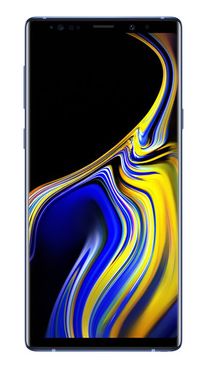The truth is, there hasn’t been much demand for new features on a smartphone. Instead, manufacturers have been busy trying to create a need by offering new features that nobody asked for and hiked prices to levels that not everyone is willing to pony up. As evidence of this, most people prefer midrange phones that have been slow to adopt on the latest and greatest features but have been busy refining and polishing features that make a smartphone what it is. As a result, that segment has been making a killing in the market.
In a smartphone market currently dominated by value-for-money midrange smartphones, I would argue that the Galaxy Note 9 is still the most bang for the buck handset that you could get your hands on. It’s worth taking a look at as more than just a smartphone. Its chipset, peripherals, and overall packaging makes it an excellent device as a main productivity driver. This is especially important because as time goes by, portability is becoming one of the main features that people look at when buying their devices. In other words, the growth of the digital nomad lifestyle is driving the need for truly portable productivity devices, and the Galaxy Note 9 is the innovation that aims to fulfill it.
Processing Power
Its CPU, thanks to the Snapdragon 845 chipset that it ships with, makes it powerful enough to run modern Windows 10 desktop applications. This productivity aspect of the CPU has become so pronounced that even laptop makers have begun to use it in their devices. The Asus Nova Go laptop, for example, features the chipset and is making quite the splash in the laptop market.
However, its power leaves a lot to be desired for desktop power users. While traditional productivity applications such as Microsoft Word and Excel, perform wonderfully on the Snapdragon 845, heavy usage of Chrome would definitely slow down the system a little bit. With more resource-intensive tasks such as photo and video editing, it becomes even more difficult to use. That doesn’t mean that the phone can’t accomplish the task, it’s just slower than the dedicated laptops.
Having the Snapdragon 845 means that the phone has a constant connection to LTE. This is a great feature to have for any productivity-centered device as more and more work is accomplished on the cloud. It’s also a useful feature to have for if users are working on a collaborative project.
Samsung DeX Station and Other Peripherals
With its flagship phones, Samsung offers a DeX Station peripheral that changes the way users interact with the device. Basically, it turns compatible Galaxy phones into desktops with keyboard and mouse input when connected to an external monitor.
The combination of the chipset and the DeX Station helps Galaxy Note 9’s bid as the main driver for people’s personal computing and productivity needs. It raises the multitasking capabilities of the phone by letting users open multiple applications on a larger screen so they can see more of the apps at any given time. It also greatly enhances the word processing and number crunching experience on the device as it allows users more screen real estate and traditional desktop inputs.
Best-In-Class Storage Options
Perhaps one of the most overlooked features of the new Galaxy Note 9 is the enhanced storage capacities. It now allows for up to a terabyte in total storage with half of it being internal and the other half being with external micro SD support. This feature would allow users to literally store more data than your average entry-level Ultrabook that usually boasts 128 GBs of storage.
Just a few years ago, having this much data in your pocket means having a huge external hard drive that isn’t even accessible without a laptop. The amount of data that is readily available on the Galaxy Note 9 doesn’t only make it so much more valuable as a productivity machine because it enables users to access their important files, especially for sensitive data that you don’t want to keep in the cloud, almost anywhere.
Galaxy Nomad’s Swiss Army Knife
Especially in this genre-destroying period where tablets such as the iPad Pro, Surface Pro, and Surface Go are trying to be laptops, Samsung’s efforts in perfecting the idea of a smartphone that’s trying to be a desktop is a remarkable foray into rarely traversed territory.
In a world where you can, all too often, see countless stranger’s personal files and login information on public desktops in hotel lobbies and public airport computers, the desktop aspiration of the Galaxy Note 9 surely has a place. The phone eliminates that risk of exposing your credentials to strangers while you’re traveling since it’s so easy to plug into a monitor and begin your work on it.
It’s not just about a single spec like the powerful chipset. Other phones have the Snapdragon 845 too yet it doesn’t have the same value proposition as the Note 9. It’s about the overall package that makes the excellent smartphone that is the Galaxy Note 9 a capable desktop too. In a world where portable productivity is needed, the phone is truly the digital nomad’s Swiss Army knife.

